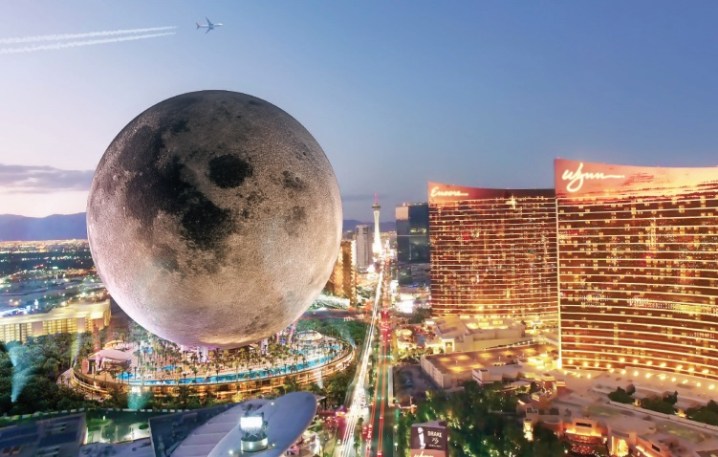Fancy a trip to the moon? In that case, Moon World Resorts may be able to help.
No, it’s not a private spaceflight company that’s about to launch tourism trips to our nearest neighbor. It is instead an architectural firm that wants to build a massive moon-like structure containing a hotel and a bunch of other amenities. It’s currently targeting several cities around the world for “Moon,” including Las Vegas.

The proposed Moon resort is the brainchild of Canadian entrepreneurs Michael Henderson and Sandra Matthews.
Henderson told the Khaleej Times of Dubai — another city that could host Moon — that the project is “large, highly complex, and totally unique.” And looking at the details, that sounds about right.

In what could be one giant leap for the tourism industry (or merely a small step?), Moon would comprise an enormous sphere with a height of 735 feet (224 meters) and a circumference of 2,042 feet (622 meters) — though local planning regulations mean the final design may have to be tweaked.
Moon World Resorts is keen to go big on detail if it gets the go-ahead to build Moon. That means creating a realistic lunar-like landscape on the exterior with features such as craters, mountains, and valleys, though it’ll probably skip that troublesome moon dust.
But the interior will also receive lavish attention. Unlike the real moon, which is of course full of cheese, Moon World Resorts’ version will offer guest rooms, restaurants, a theater, a convention center, a casino (hey, it’s Vegas), a nightclub, and a spa, among other features. Some attractions will incorporate a space theme, with the nightclub, for example, featuring what looks like a giant spaceship as its centerpiece. Another special section will even offer visitors the chance to walk on the surface of the moon — or something very much like it.
According to CNN, Moon could cost as much as $5 billion to build. Henderson told the news outlet that he expects to ink the first deal by the end of this year, with the first guests arriving possibly in 2027. Dubai appears to be the current favorite to get the first Moon.
Henderson told CNN that while there will be plenty of amazing things offered inside Moon, he believes “a lot of people are going to be excited when you look up at the world’s largest sphere,” adding, “I think that’s going to be the mind blower.”


